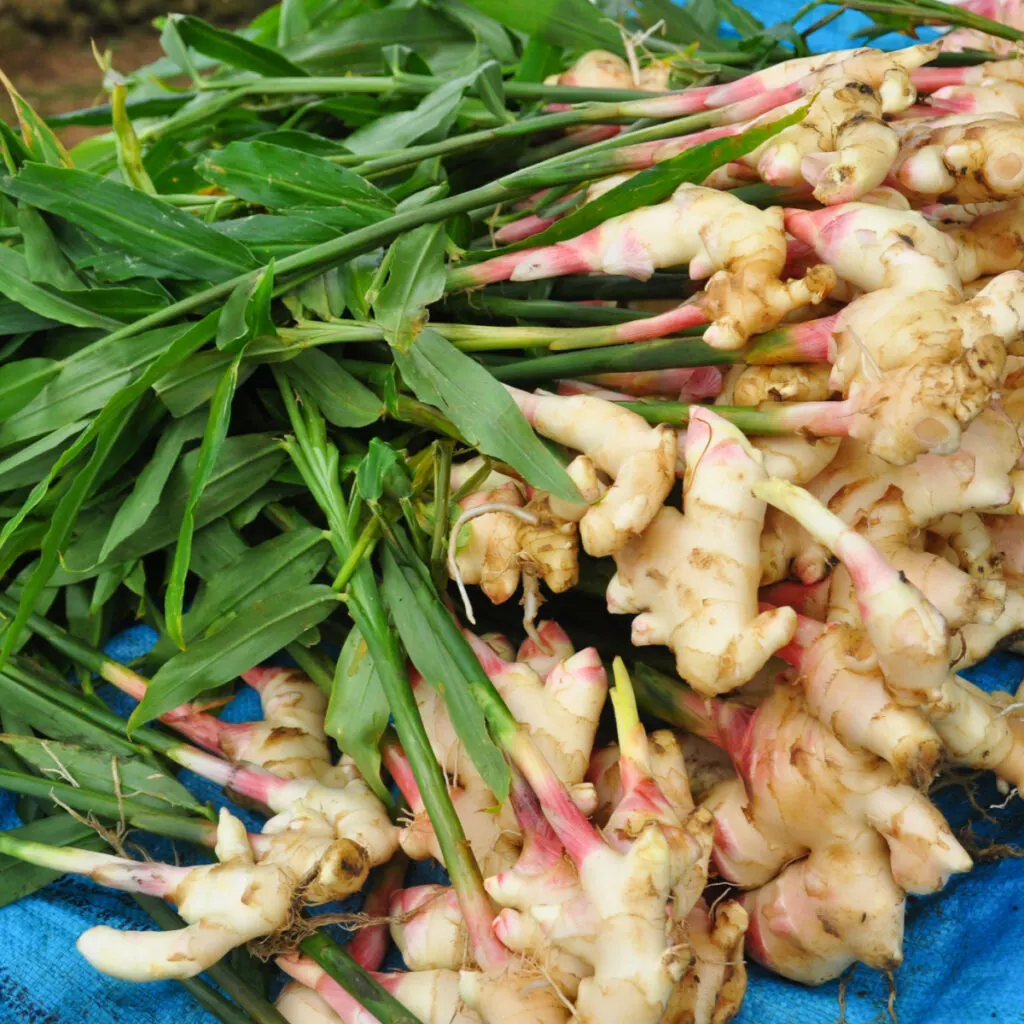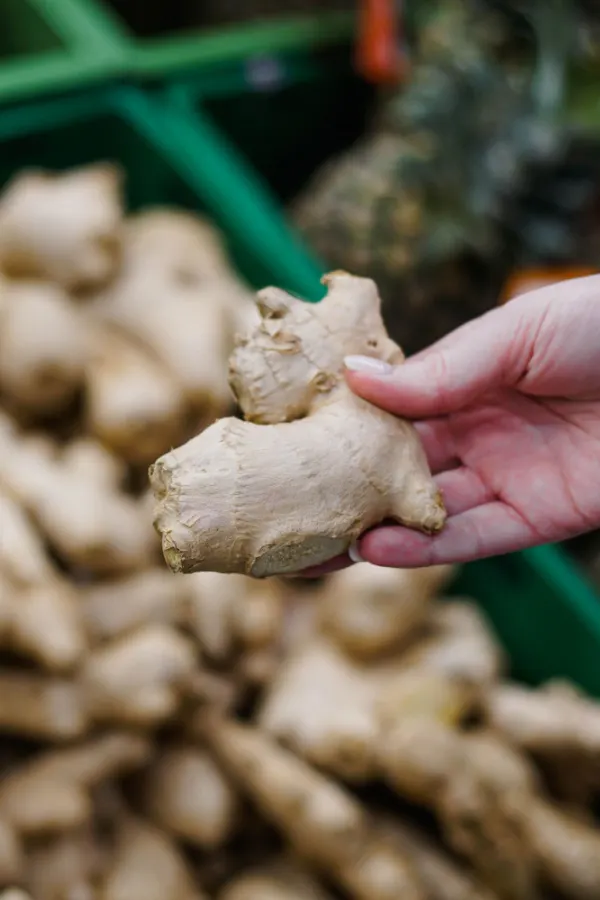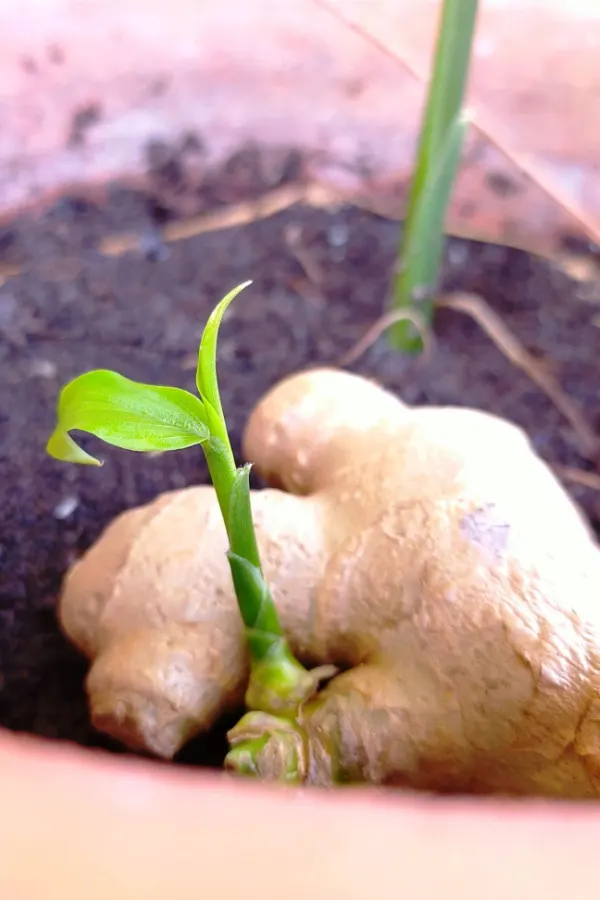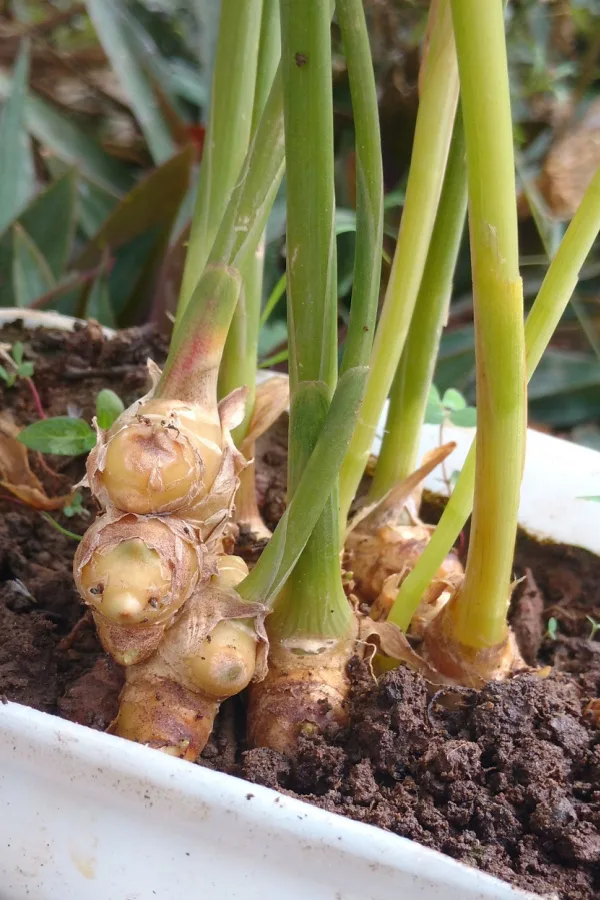Did you know that you can grow your own beautiful ginger plant indoors with ease – and enjoy the amazing taste and flavor of this incredibly healthy herb whenever you want, the whole year round?
Fresh ginger is perfect for adding deep, warming flavor to teas, soups, desserts and all kinds of dishes. But the benefits of growing ginger go far beyond its culinary uses. In addition to its delicious taste and invigorating scent, ginger also has a long list of medicinal benefits as well – and it makes for an attractive houseplant too!
Ginger is well-known for helping with nausea along with a whole slew of digestion and stomach issues. It can also help alleviate symptom from motion sickness. And for many soon-to-be moms, it can also provide serious relief from morning sickness during pregnancy. In fact, the herb is so useful it was even named the “Herb of the Year” by the International Herb Association in 2023!

But what really makes ginger special is just how easy it is to grow indoors as a houseplant. The plant produces beautiful foliage with little care, and even better, you can continually harvest from its roots whenever you need it, all without harming the plants continued growth!
How To Grow Ginger Indoors – The Simple Secrets To Growing Ginger
Growing your own ginger plant all starts by planting a ginger root. Ginger roots are rhizomes, which is nothing more than a fancy name for roots that continuously grow under the surface of the soil.
While you can often find ginger root at grocery stores, it’s best to avoid using it for planting. For starters, ginger found in stores are often quite old. But even worse, most ginger roots that are produced for grocery stores are also sprayed with growth inhibitors and other chemicals.
Although these sprays help the ginger to last longer on store shelves – they unfortunately also make sprouting new plants from them extremely difficult – if not altogether impossible. Because of that, it’s always best to purchase ginger root that is specifically grown for planting.

You can often find ginger root for growing at local nurseries or greenhouses. There are also a fair number of retailers that sell ginger root specifically made for growing on line as well. (Affiliate Product Link: Live 10 Ginger Rhizomes)
The good news is once you purchase it – you can continue to grow new plants from the existing root forever. In fact, if you happen to know someone already growing ginger, another great way to grow your own plant is to simply take a cutting from an existing plant. It won’t harm the plant in the least – and it’s free!
Selecting Ginger Roots For Growing – How To Grow Ginger Indoors
For starters, always avoid using any roots that look dry or shriveled. Instead, select a ginger root that is plump and that has multiple small nodes growing from it. These nodes are similar to the eyes on a potato – and like potatoes, it is the nodes on the ginger root that will sprout new plants.
Cut the root into one to two inch sections for each plant you will be planting. It’s good when starting your own plants to plant a few different root sections to make sure you have at least one sprout. If they all sprout – they always make great gifts!
When cutting, make sure that each section has at least two nodes on it. Swelling or a slight green tint around the nodes is a good indication that they will likely sprout easily. After you have cut the root into sections, allow the pieces to dry and callous over for a couple of days.

Planting Ginger Roots – How To Grow Ginger Indoors
Unlike most houseplants, the roots of a ginger plant grow horizontally as opposed to vertically. For this reason, choose a container that is at least 10 to 12 inches wide with plenty of drainage holes. The depth of the container isn’t as important as the width.
Fill the bottom of the container with 4 to 5 inches of fertile, well-draining potting soil. Use a good-quality potting soil mixture to give the roots the best chance of sprouting and growing. (Affiliate Product Link: Espoma Potting Soil Mix)
Place the ginger rhizome into the soil with the biggest nodes facing up. Gently press the rhizome into the soil to help set it in place. Add additional soil until all of the root is covered with half an inch to an inch of potting soil.
Lastly, slightly moisten the soil. You want the potting soil to be moist but not saturated. If the soil is too wet, it can cause the rhizome to easily rot.
Patience Is Key – How To Grow Ginger Indoors
Starting ginger takes a patience. And a lot of it! It can take ginger root up to 8 to 10 weeks before the first sprouts will start to appear above the soil line. During this time frame, keep the soil consistently moist and warm to help encourage sprouting.

To help with the process, cover the top of the growing container with plastic wrap or a plastic lid. This will help to retain moisture as well as help to keep the warmth in while the nodes sprout. Once you start to see growth, you can then remove the covering.
Place the container in a location that receives indirect light. Ginger grows best in shadier locations when it is in its natural setting, so avoid direct, harsh sunlight.
Long-Term Care For Growing Ginger Indoors
Ginger plants like to stay in moist soil. Do not allow the soil to dry out completely for more than a day. However, also avoid overly saturated soil. Slightly moist is the ideal soil condition. In addition to keeping the soil moist, ginger plants are heavy feeders, so fertilizing regularly is a big key to strong growth.
For best results, fertilize plants every four to six weeks. Since you will be most likely consuming the ginger root, organic fertilizers are the way to go. Worm castings, compost tea, or a balanced, all-purpose organic fertilizer are all excellent ways to fertilize ginger. Affiliate Link: 100% Organic Worm Castings – Natural Superfood for Plant Growth, Root Development
Harvesting
Ginger plants can take around 10 months before they are fully mature. However, the roots can be harvested when the rhizomes are young and tender, which only takes around 3 to 4 months. The flavor will be less intense and milder at this point. In addition, there won’t be any need for peeling young ginger roots.

To harvest young shoots, feel in the soil for the edge of the root. Remove the soil around this area and carefully cut out the amount you need. Fill the soil back in after harvesting. Be sure to leave at least a few inches of rhizome connected to the stalks if you want to keep the plant growing and living.
You will always want to wait a few weeks before harvesting from the same plant again. For more mature roots, you can pull the entire plant from the container. Remove any of the stalks, leaving only the roots. Be sure to keep a few cuttings if you want to replant to start the process over again.
Moving Potted Plants Outdoors In The Summer – How To Grow Ginger Indoors
Potted ginger plants can be moved outside during the warm summer months just like you would for many other herbs and plants. (See, “How To Grow Herbs Indoors“)
For those plants, keep them in a shady location during the summer months. A covered porch or deck works perfectly. Continue to water well. Bring the growing ginger plants indoors when nighttime temperatures drop below 50º Fahrenheit (F) and daytime temperatures are below 70-75º F.
Here is to growing your own ginger plants indoors – and to having a fresh supply of ginger on hand to harvest and use all year long!
Follow Our Facebook Page For Even More Great Tips! Simple Garden Life Facebook Page
Simple Garden Life is a website dedicated to keeping gardening fun, simple and enjoyable! We publish two new articles each week along with a new garden podcast episode every two weeks. This article may contain affiliate links.
